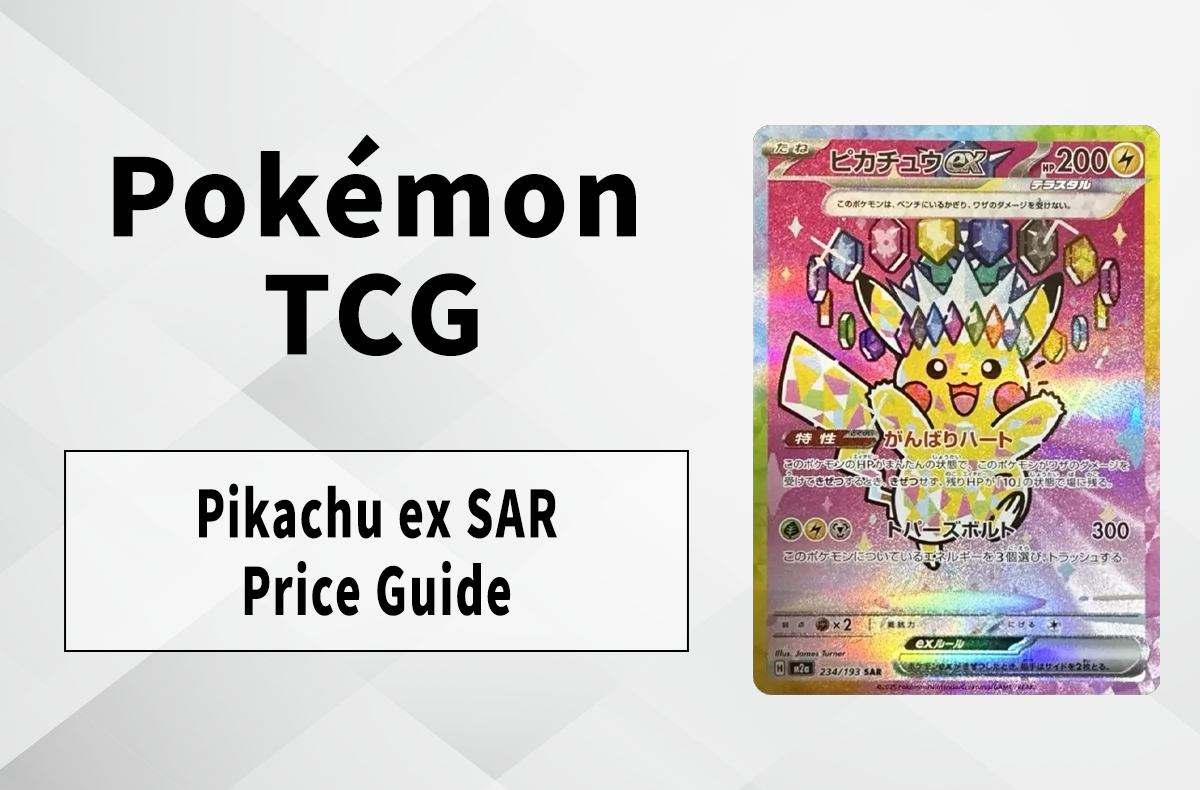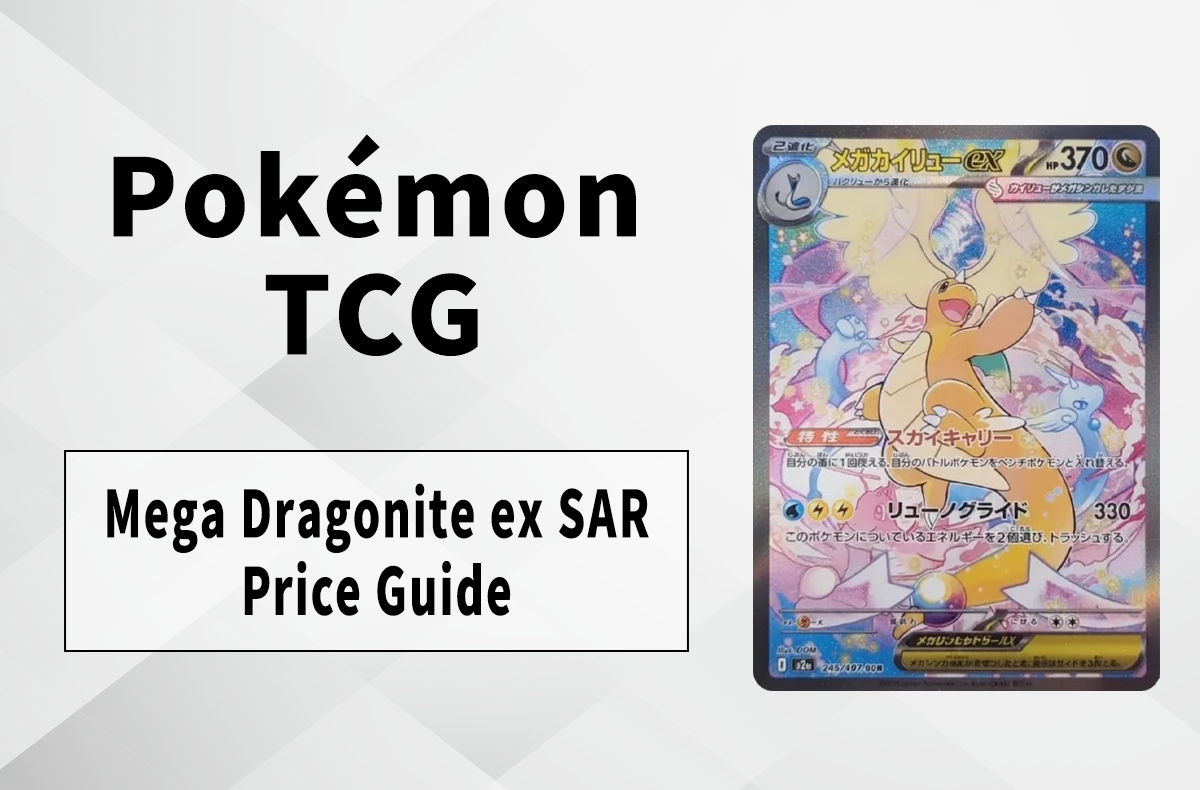The History of Pokémon-ex TCG Cards: From Gimmick to Staple
For maximum effect, play "We're Finally Landing" when reading the last line before the main portion, then pause reading as the background music plays.
Over more than two decades of intermittent appearances in the Pokémon TCG, Pokémon-ex cards have become staples for both collectors and players whenever they’ve been around. At this point, it’s almost impossible to imagine the Pokémon TCG without Pokémon-ex. It’s safe to say that Pokémon-ex changed the Pokémon TCG forever.
But how did we get here? Let’s find out now.
This is the history of Pokémon-ex TCG cards.
Gen 3: How It All Began



Let’s go all the way back to 2003, during the early days of the Pokémon TCG’s third generation. In January of that year, the Pokémon Players Club was established, replacing the original Pokémon Fan Club. Everyone who signed up would receive three promotional cards that, when released, would ensure that the Pokémon TCG would never be the same again: Regice ex, Regirock ex, and Registeel ex—the first Pokémon-ex cards ever printed. Additionally, Pokémon Players Club with 5,000 EXP Points could receive a Celebi ex card; those with 7,000 EXP Points would be eligible for a Mew ex card. With that, the era of the Pokémon-ex was underway.
Though there were just five to begin with, these Pokémon-ex cards had just kickstarted a Pokémon TCG revolution. Pokémon-ex cards would now be defined as cards featuring Pokémon of unusually high power; however, should the opponent score a KO on a Pokémon-ex, the opponent would be allowed to claim two Prize cards instead of the usual one. The theory behind the concept was that there was a risk/reward factor in play; a player could potentially unleash a tremendously powerful Pokémon but at the risk of giving up an additional Prize card.
The first main set to include Pokémon-ex was the ADV Expansion Pack, the first expansion set of Gen 3. Five Pokémon-ex were included: Chansey ex, Sneasel ex, Hitmonchan ex, Manectric ex, and Mewtwo ex. As the third generation continued and more Pokémon-ex cards were released, these cards’ impacts on both collections and gameplay became readily apparent.
Typically extremely rare cards with appealing illustrations, Pokémon-ex would inevitably become some of the most sought-after cards of their respective sets and, therefore, among the most expensive, if not the outright. Pokémon-ex cards also soon emerged as predominant fixtures in tournament decks as it was soon found that in the vast majority of instances, the reward of the Pokémon-ex’s remarkable power far outweighed the risk of surrendering an additional Prize card.
Much to the dismay of many, Pokémon-ex cards were discontinued in 2006 when Gen 3 ended. In the fourth generation, they were replaced by Pokémon LV.X. However, the story of Pokémon-ex cards didn’t end there.
Gen 5-6: The Return



The concept of Pokémon LV.X cards ended up being a failure. Critically panned and generally disliked by both players and collectors, the majority of LV.X cards didn’t even come close to living up to the standard their predecessors had set. The dismal performance of LV.X cards was a major reason why there’s a near-total consensus that the fourth generation of the Pokémon TCG was the worst to date.
Due to this turn of events, Creatures Inc. put the fanbase out of its misery, killed off LV.X cards at the end of Gen 4, and revived Pokémon-ex cards—now stylized as Pokémon-EX cards—when Gen 5 began in 2010. Almost at once, it became clear that this was the right move. Right from their re-introduction, Pokémon-EX cards immediately reclaimed their status as some of the biggest pulls of their sets.
Gameplay-wise, Pokémon-EX cards ended up being even more dominant than their third-generation predecessors ever were. Almost every deck at the top of the metagame was highlighted by at least one, and usually multiple, Pokémon-EX. Such was the impact of Pokémon-EX cards on the Gen 5 meta that some began to wonder if a deck built around single-Prizers would ever be able to reach the top of the meta again—a question that is still asked to this day.
Creatures Inc. then turned it up another notch in the sixth generation when Mega Pokémon-EX cards made their Pokémon TCG debut. Depicting the Mega Evolution mechanic that had just been introduced in the Pokémon X and Y video games, these cards were even more powerful than ordinary Pokémon-EX. However, after evolving a Pokémon-ex into its Mega form, the player’s turn would end immediately unless a Spirit Link card was used to do so. In the case of Kyogre ex and Groudon ex, Mega Evolution was known as “Primal Reversion”.
As might have been expected, right from their introduction in Collection X [XY1] and Collection Y [XY1]—the dual set that was Gen 6’s opener—Mega Pokémon-EX cards were among the generation’s most desired and valuable cards. To this day, some Mega Pokémon-EX cards still sell for tremendous prices—some have been valued at well over US$1,000 per card.
Gen 9: Pokémon-ex Today



In the seventh and eighth generations, Creatures Inc. opted for a somewhat more experimental approach. Gen 7 saw Pokémon-EX cards replaced by Pokémon-GX cards; these were subsequently replaced by Pokémon V, Pokémon VMAX, Pokémon VSTAR, and Pokémon V-UNION; all saw varying degrees of success; however, none ever lived up to the standard set by Pokémon-ex. Thus, Pokémon-ex were once again revived when the ninth generation began.
Now sporting a new visual icon to denote their status as Pokémon-ex, these cards had a new variant emerge in Gen 9: Terastallized Pokémon-ex. These Pokémon-ex were immune to any damage that would’ve been sustained while on the Bench. Terastallized Pokémon-ex were differentiated from other Pokémon-ex by way of a label below the Pokémon’s HP. Terastallized Pokémon-ex could either retain their existing type or take on a different one.
Stellar Pokémon-ex, introduced in Stellar Miracle [SV7], expanded upon this concept. The Terastallization-exclusive Stellar type was introduced to the Pokémon video games in The Indigo Disk, the second DLC of the Pokémon Scarlet and Violet video games. When this concept was brought to the TCG, the Pokémon involved could make use of multiple Energy card types to unleash a mega-powerful attack unique to Stellar Pokémon-ex cards. These cards are primarily based on the Crystal Type Pokémon, which were around during the late second generation of the Pokémon TCG.
Once again, Pokémon-ex cards were at the top of the list for both players and collectors. In almost every set since the second re-introduction of Pokémon-ex cards in the Scarlet ex [SV1S] and Violet ex [SV1V] sets, such cards have been among the highlights. In addition, almost every tournament-viable deck in the Gen 9 meta includes at least one Pokémon-ex card—and often more than that.
As the ninth generation continues, even more Pokémon-ex cards will be released—many of which will almost certainly make major impacts, whether from the perspective of collectors, players, or both. Though there’s no guarantee that Pokémon-ex will return once the tenth generation begins, it’s obvious that every time that Pokémon-ex cards have been in the Pokémon TCG, they’ve dramatically changed its landscape in many ways.
For the latest releases, breaking news, and exclusive interviews, stay tuned to the SNKRDUNK Magazine and @snkrdunk on Instagram. Explore the SNKRDUNK App too and don’t forget to use our welcome code from the banner below before making your first purchase. Additionally, you can even visit our stores in Singapore and Japan!
Follow us on:
More SNKRDUNK Features:
Three Gen 8 Pokémon TCG Sets (Lost Abyss [S11], Incandescent Arcana [S11a], Paradigm Trigger [S12]) Have Just Been Reprinted—Here Are Our Top Picks
Don’t Fall for Fakes—Use These Methods to Determine If a Pokémon TCG Card Is for Real
TCG Throwback: Pokémon TCG Split Earth/Mysterious Mountains/Skyridge
The Best Eeveelution Cards Will Impress Pokémon TCG Buyers Eight Days a Week
[TCG Throwback] Yu-Gi-Oh TCG Stardust Overdrive




















![KEEN Uneek Loafer WK “Cordovan” (Serial Numbered) [Release Date/Price/Where To Buy]](https://snkrdunk.s3.ap-northeast-1.amazonaws.com/en/magazine/wp-content/uploads/2025/12/18174957/20251213014846-2-scaled.webp)
![Supreme 25FW Week 17 Items [Release Date/Price/Where To Buy]](https://snkrdunk.s3.ap-northeast-1.amazonaws.com/en/magazine/wp-content/uploads/2025/12/16172651/20251215141711-5.jpg)
![Palace Skateboards x The North Face Purple Label “Holiday 25” Week 4 [Release Date/Price/Where To Buy]](https://snkrdunk.s3.ap-northeast-1.amazonaws.com/en/magazine/wp-content/uploads/2025/12/16171616/20251215095019-0.jpg)




